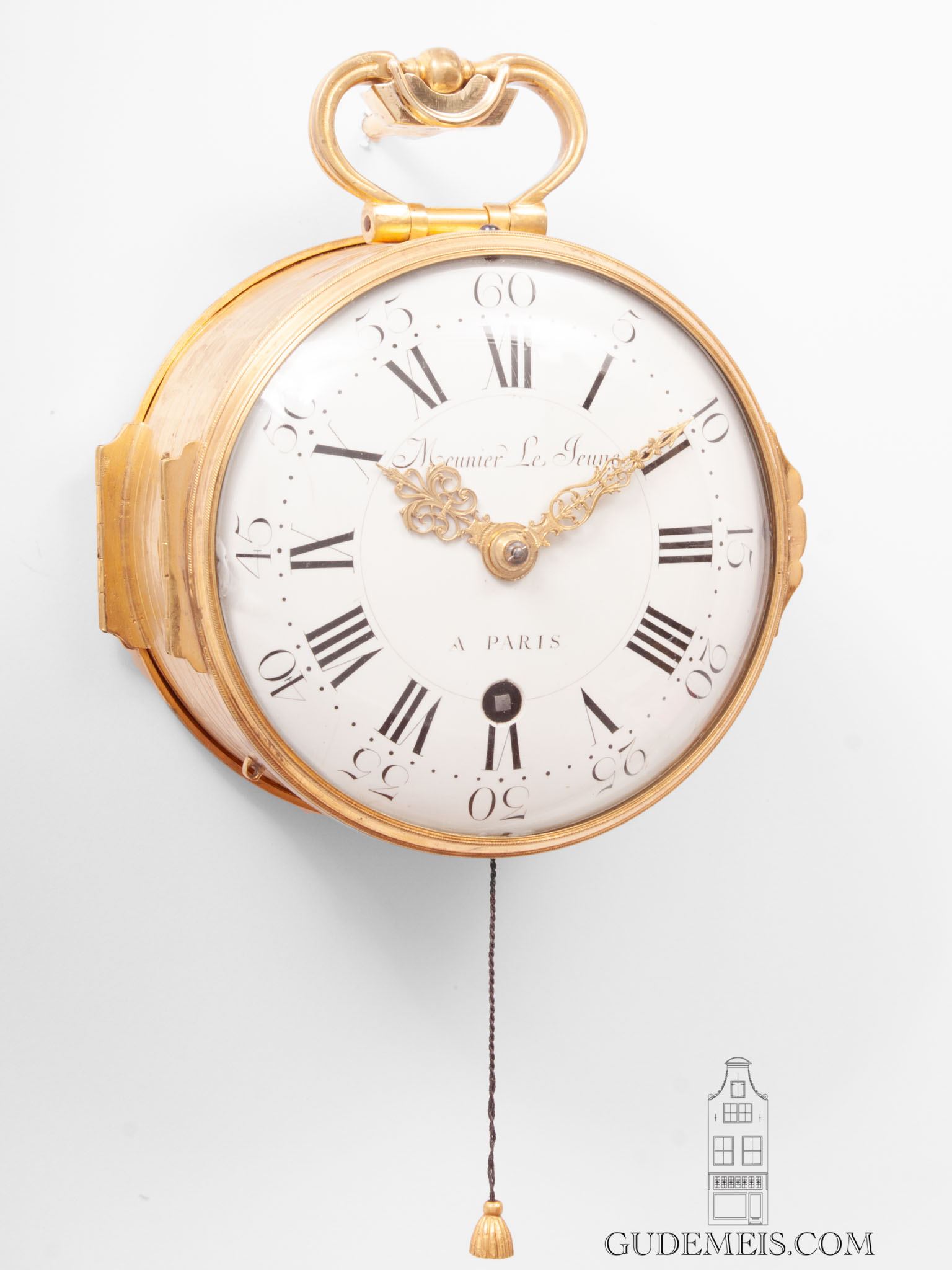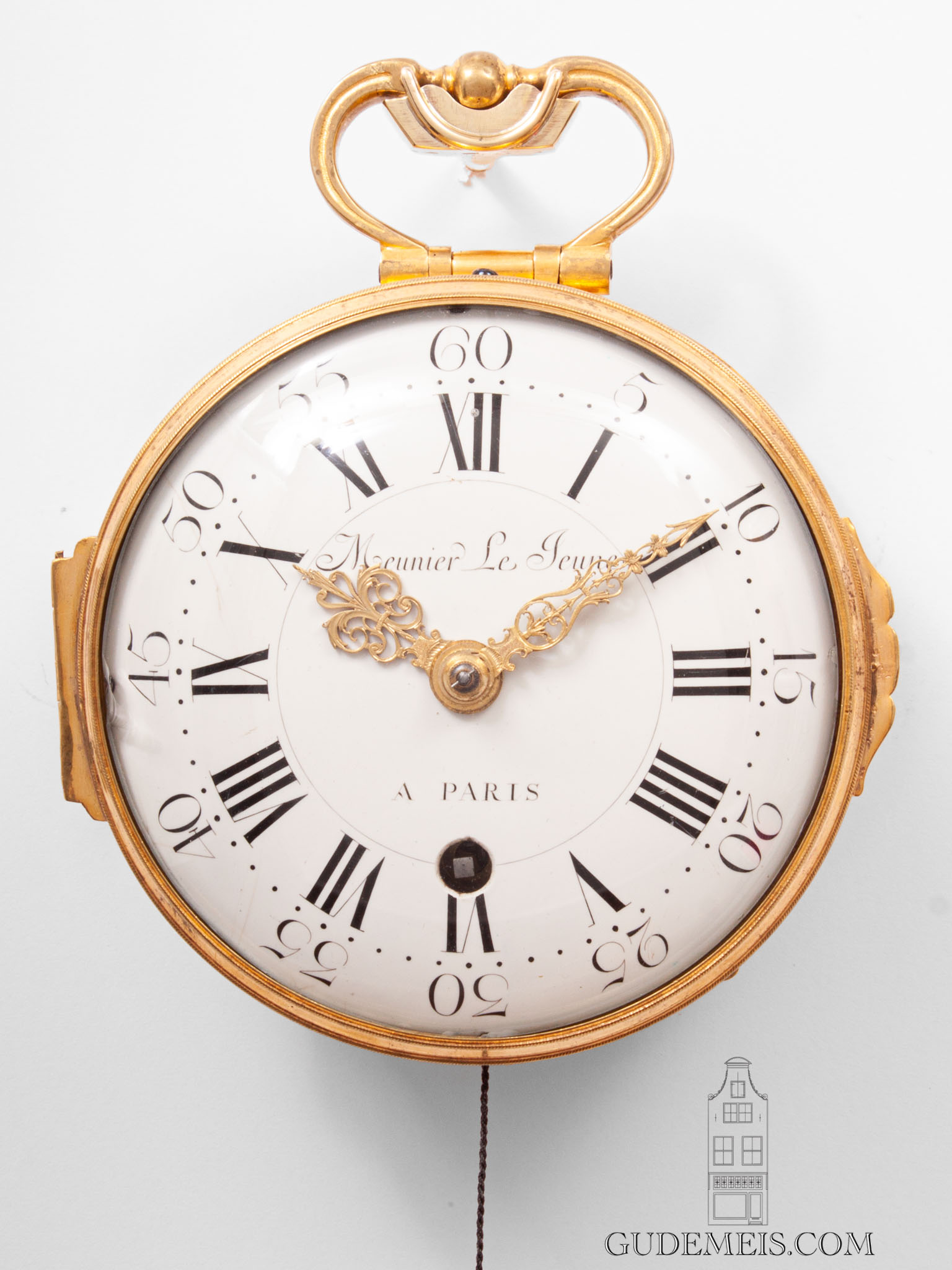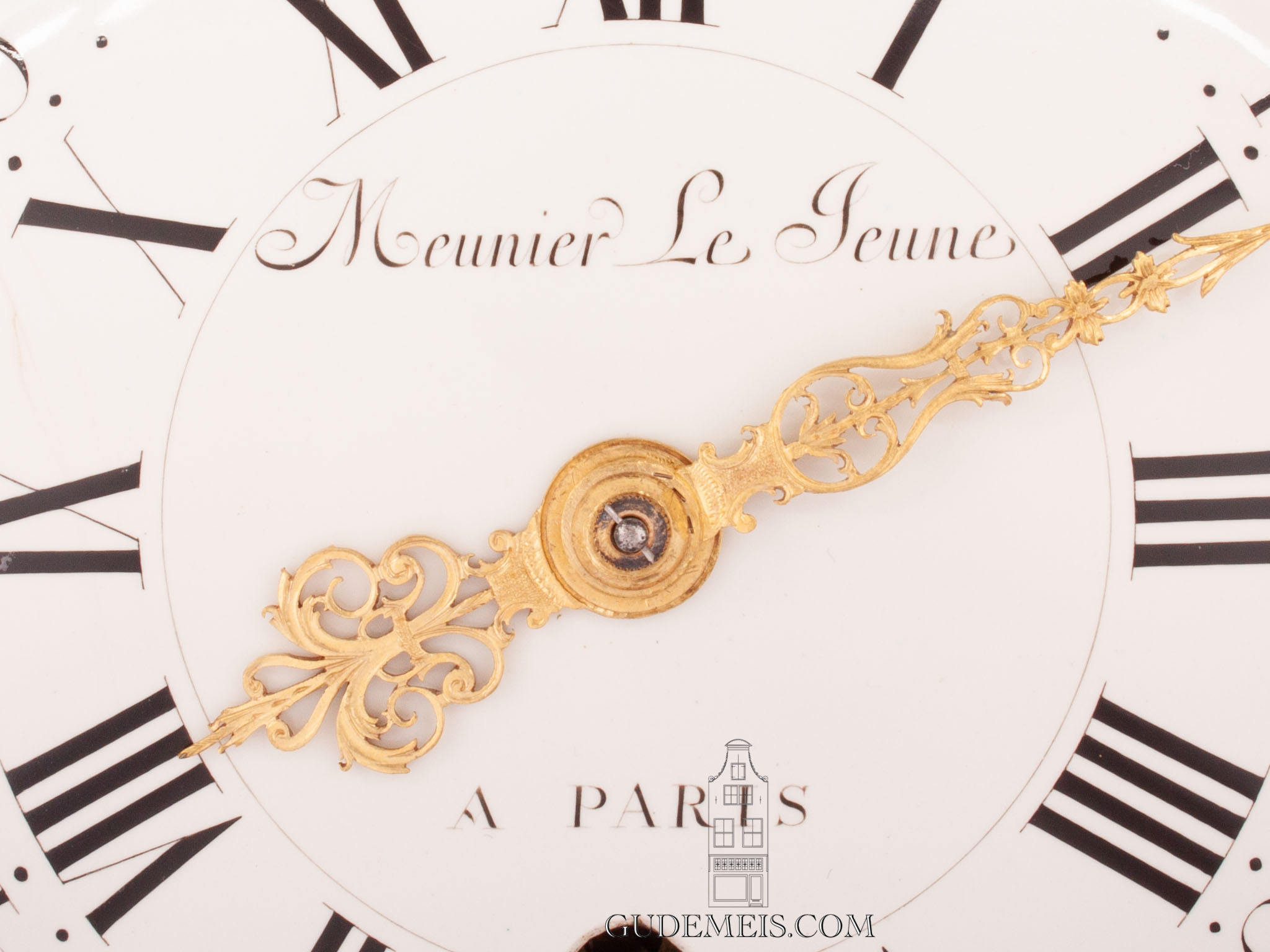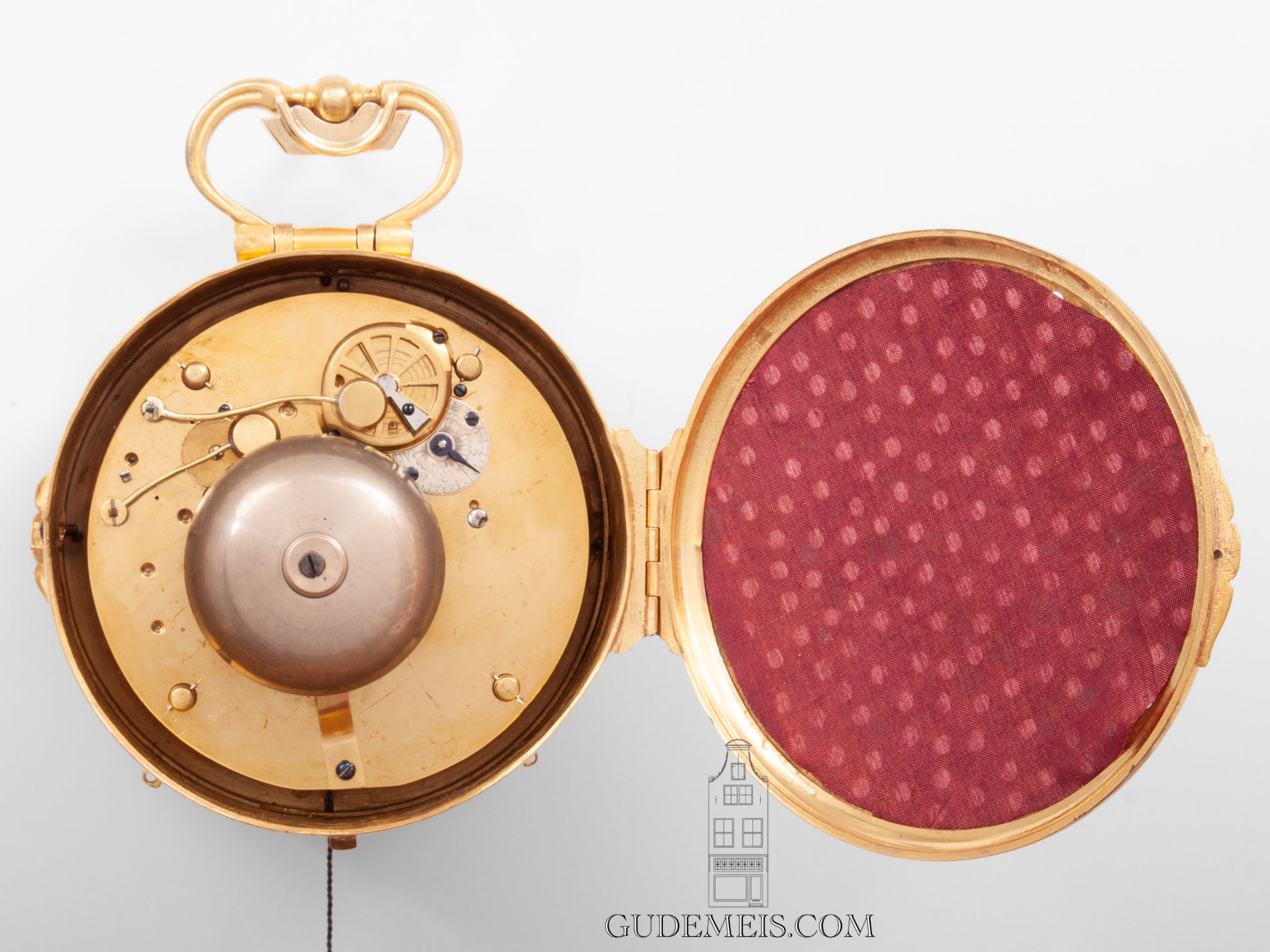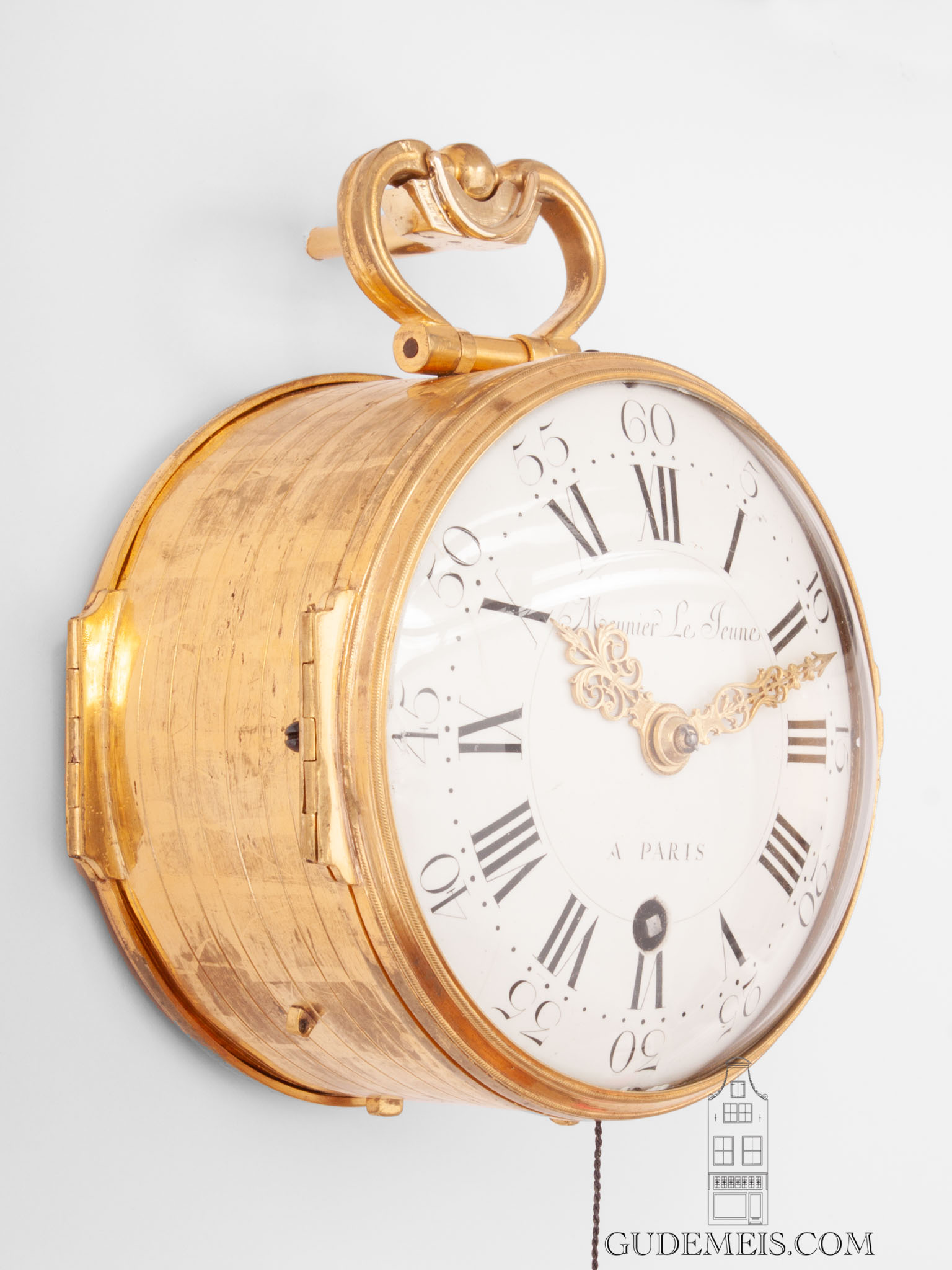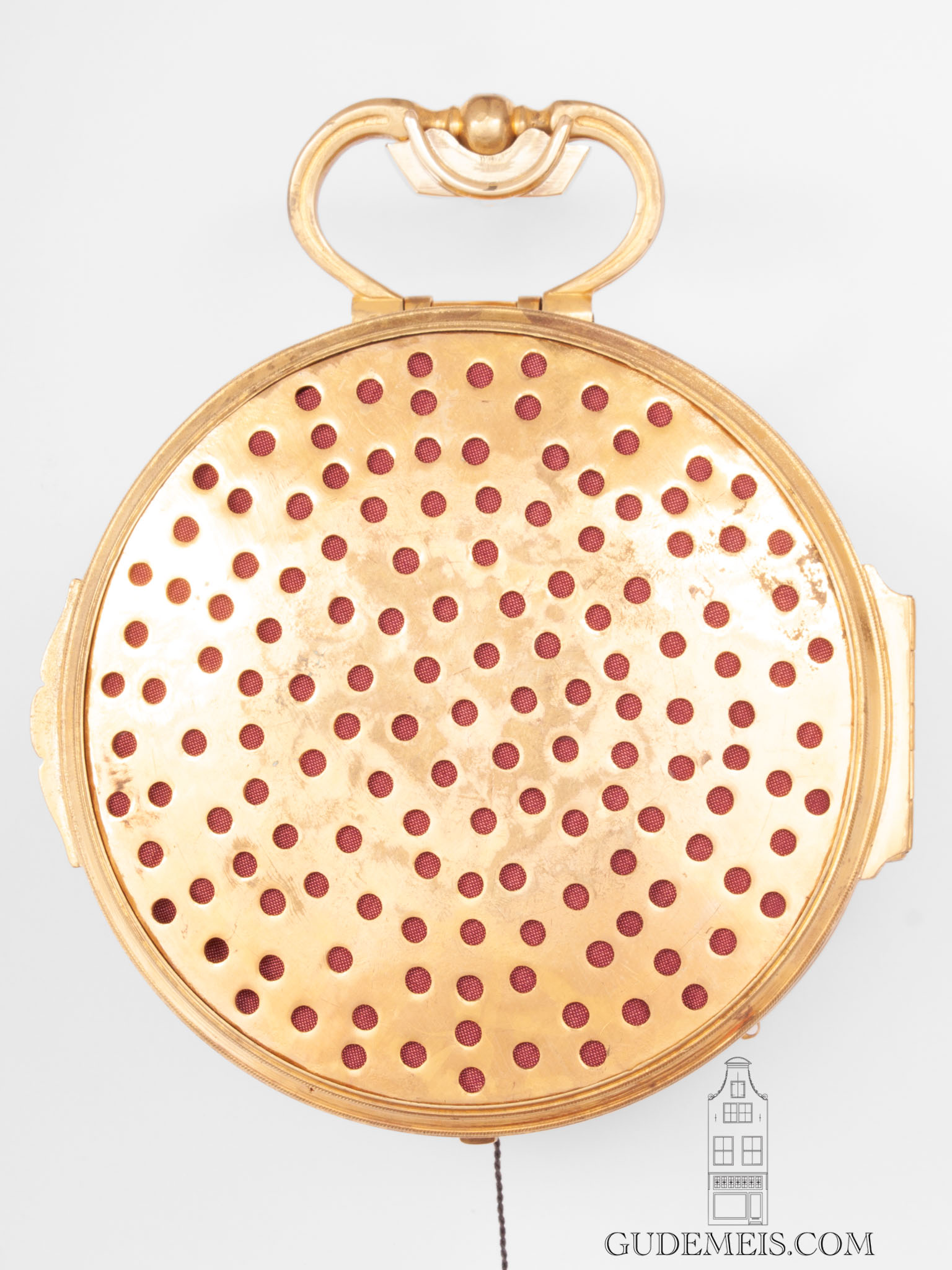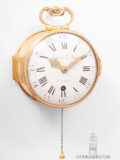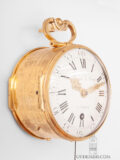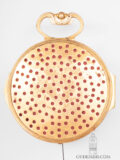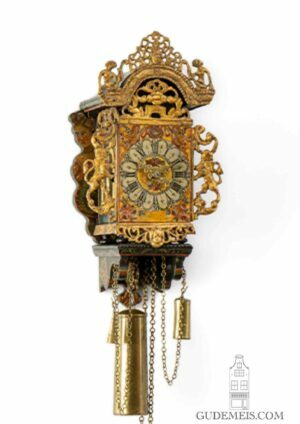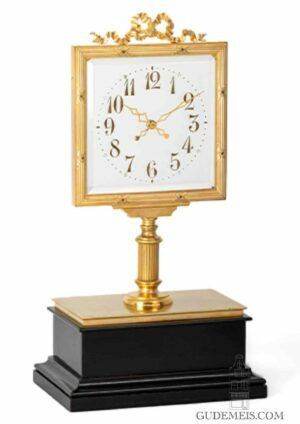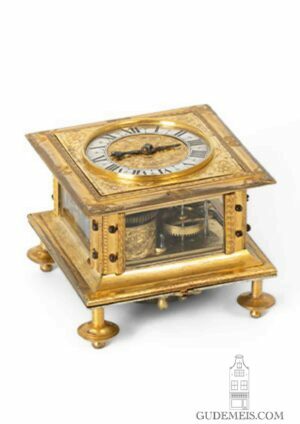An early French Louis XVI gilt quarter repeating travel clock, Meunier Le Jeune Paris, circa 1780.
Omschrijving
Travel clock
In the third quarter of the 18th Century there must have been a growing need for travel clocks. I can state this because both the ‘Pendules d’officier’ and ‘Capucines’ find their origin around this time. In this early period the production was still fairly small which causes them to be very individual, differing per maker. Besides these ‘Pendules d ófficier’ and ‘Capucines’ which have to be placed on a surface, there were clocks that could be hung. Often these clocks are called ‘coach clocks’ or ‘coach watches’ suggesting that these were hung in a carriage. This might very well be possible but it is also very likely that these clocks were hung on a nail or hook in the room one was staying. This clock has no striking work but is able to repeat the hours and quarters on demand. In this way, one could know what time it was in the dark which was very handy in a time when making light involved making fire. The functional exterior was practical during travel in earlier days, but makes it easy to place it in any interior nowadays. Very practical and fairly rare for this type of clocks is that the clock has a movement of eight day duration.
Meunier Le Jeune
The enamel dial has Roman numerals for the hours and Arabic numerals for the five minute indication. The centre is signed Meunier Le Jeune A Paris. The beautiful foilate and engraved pierced hands are made of gilt brass. Both the style of the numerals and hands are typical for the Louis XVI period.
Cylinder escapement
The eight day duration, annular plated movement, is driven by a spring barrel in combination with chain and fusee. This fusee mitigates the diffences in power that occur when the spring is unwinding. The rate is regulated by a cylinder escapement in combination with a plain balance which has a balance spring and fine regulation. By pulling the string, an auxiliary spring is wound to strike the hours and quarters past on two bells.
Ormolu case
The movement is fitted in an annular functional ormolu case. It is adorned by engraved lines and surmounted by a cast handle. The back door is pierced to let the sound of the quarter repeating through. The whole is hung on a hook on the wall.
